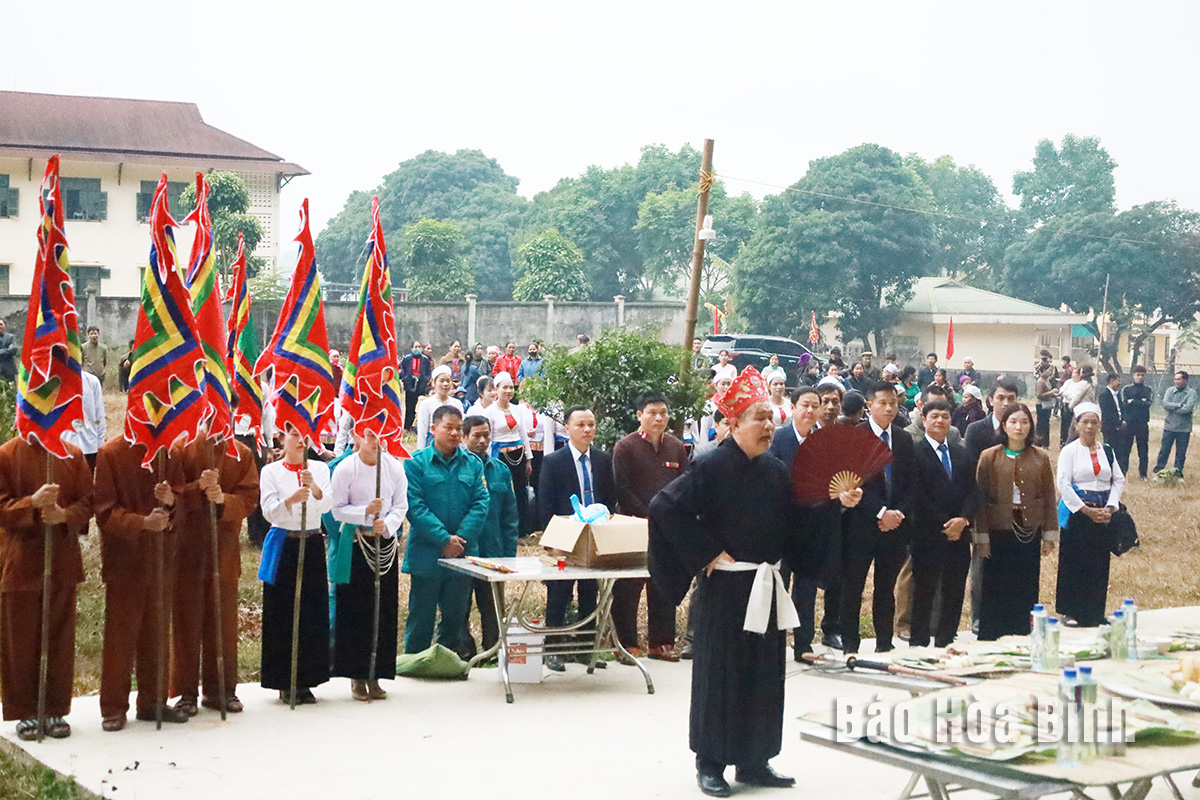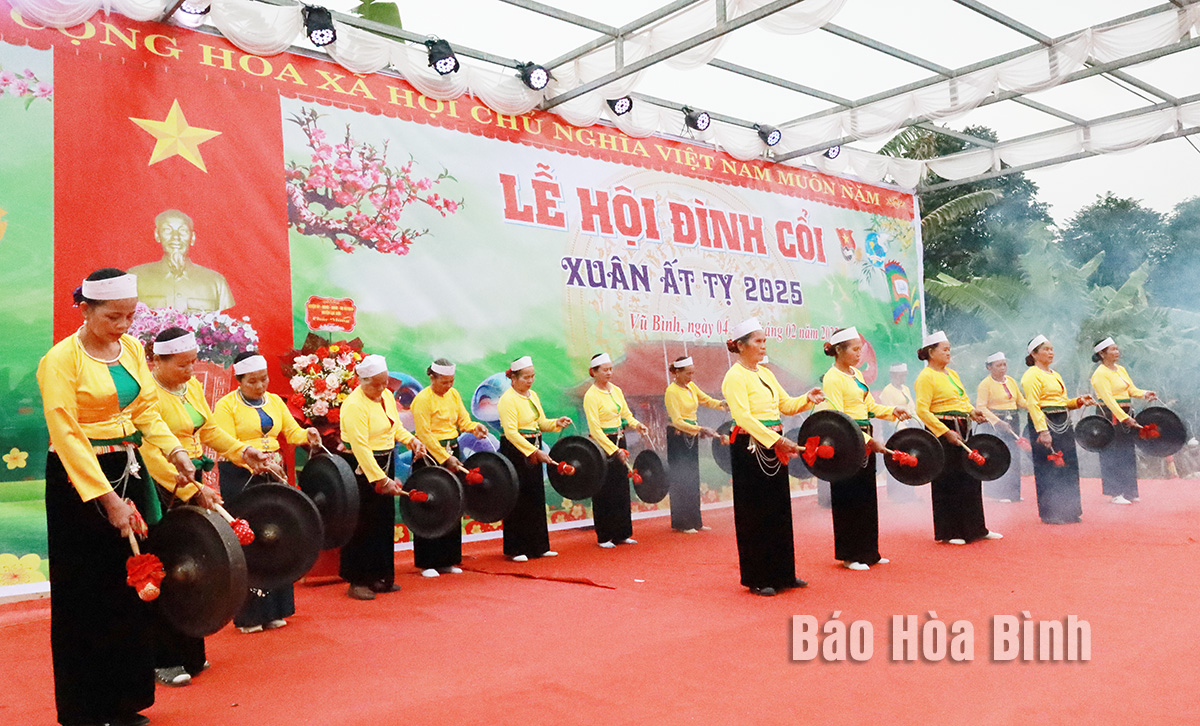



Ritual offerings to the gods at the Mai Da Lang Vanh (the stone roof of Vanh village) special national relic site in Yen Phu commune, Lac Son district.
Revived in 2005, the "Xuong Dong” Festival, also known as the Yen Phu Khai Ha Festival, is held every three years and is closely linked to the archaeological site of Mai Da of Lang Vanh (the stone roof of Vanh village), which was officially recognised as a special national relic site. The festival aims to promote and raise awareness of the archaeological site's value, while also praying for a prosperous year with favourable weather, bountiful harvests, and good health for the people. It honours the gods and ancestors who cleared the land and taught the local community the art of rice farming.
The festival features a range of ceremonial rites, including offerings at Mai Da Lang Vanh and the New Year ploughing ritual. Following major rituals, Yen Phu residents participated in a variety of cultural activities, performances, sports, and traditional games, including a Muong ethnic costume contest, tug-of-war, the traditional game of "danh mang” (bringing "mang” seeds into holes), and "day gay” (stickpushing).
Meanwhile, in Vu Binh commune of Lac Son, from February 3–5 (the 6th-8th day of the Lunar New Year), the Coi communal house festival was celebrated on a local scale. According to Muong ethnic folklore and the accounts of village elders, Coi communal house was built in the early 19th century, located near the foot of Mount Khu Bay, in the Coi Khua rice fields. The house has the traditional Muong stilt house style, with three main rooms, two side rooms, and six stone-supported columns. Its thatched roof spans around 8 metres in length, 5 metres in width, and 7 metres in height, featuring a main entrance, a side door, and seven smaller openings. The temple’s floor is raised 1.4 metres above the ground, facing south. The structure primarily uses wood.
The primary deities worshipped at Coi communal house include Queen Mother Hoang Ba, King Ca (Saint Tan), King Cun, King Hai (Cao Son and Quy Minh Lords), the tutelary gods, and the village’s ancestral spirits.

A Muong gong performance during the Coi communal house festival Vu Binh commune of Lac Son.
The communal house festival, held annually, is a way for the community to express gratitude to Queen Mother Hoang Ba and Saint Tan Vien for saving the people from severe floods, teaching them how to farm, raise livestock, weave, and ensure the prosperity and well-being of the village.
In addition to rituals such as processions, offerings, and the "Com moi” (new rice) ceremony, the festival creates a vibrant and festive atmosphere, featuring activities like song contests, a Muong ethnic costume display, local OCOP (One Commune - One Product) product booths, volleyball competitions, and popular folk games such as tug-of-war, "danh mang”, rope skipping, and "nem con” (throwing the cloth balls).